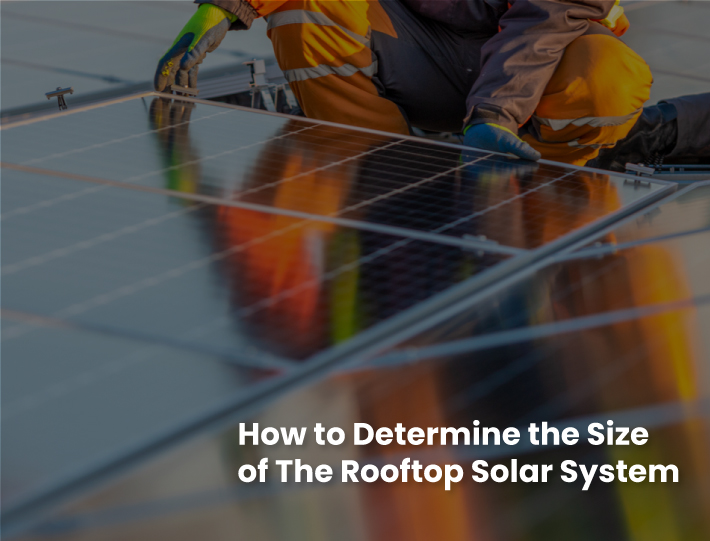How to Determine the Size of the Rooftop Solar System
An electrical grid is a system of interconnected power stations, transmission lines, and distribution lines that supplies electricity to consumers. Usually, electricity is made at a nuclear power station by burning fossil fuels. Solar power is an ecological way to produce electricity. Residential solar power system are solar panels that convert sunlight into electricity. These systems are becoming more popular because they offer many benefits.
You can get Residential Solar systems on the rooftop of your house or your front or back yard. They are easy to maintain and are typically installed unobtrusively. Residential Solar power system are environmentally friendly because they do not produce any greenhouse gases or air pollution. They are also cost-effective because they require no fuel, have no emissions, and are not affected by fuel price fluctuations.
Residential solar systems are easy to install and use, provide environmental benefits, and are cost-effective. A rooftop solar system can be installed on a home, a commercial building, or a warehouse. It is a one-time installation, and the system will generate electricity for as long as the sun shines. The solar panel is heavy and requires a sturdy roof to mount it. The size of the roof determines the size of the system.
A solar system that can power a home would typically be installed on a roof that has an area of at least 1,000 square feet.
One can't overlook the benefits of residential solar systems. The sun provides us with a renewable source of energy, so it is great for the environment. Solar power is also more affordable than traditional power sources. The only thing holding people back from installing solar panels is the size of their roof. A typical solar system for a home is between 5 and 10 kilowatts.
If you have a large roof, you might want to install a system that is more than 10 kilowatts. If you are interested in installing solar panels on your roof, but are unsure of the size of the system you need, you should consult with a professional.
The size of the system will depend on the size of your roof, the amount of sunlight your roof receives, and your energy needs. You can calculate the size of your system by measuring the surface area of your roof in square feet and multiplying that number by how many watts you need per square foot.
The system comprises several solar panels to produce enough electricity to power your home or business. The sleek, modern design of the solar panels on the rooftop is attractive and practical. The solar panels are efficient and provide electricity for your home or business. The system is durable and easy to install.
The amount of electricity generated by the system will depend on the number of solar panels and the number of hours of sunlight the roof receives.
The size of a rooftop solar system will depend on several factors like:
1. The average amount of sunlight in the area.
2. The building's electricity requirements.
3. How much of the roof is suitable for solar panels.
You require to know and consider several things before finding out the space required on roof for solar panel installations.
You should know the dimensions of the solar panels and the size of your residential solar power system. You also require to figure out if the orientation should be landscape or a portrait.
The first things you ought to know are:
1. The size of the system you want to install
2. The type of solar panel
3. The spacings between solar panels
4. The orientation of the panels. Once you have this information, you can determine how much roof space your system needs.
Now you're ready. Here’s how you calculate the area required:
Size of the system (in Watts – e.g. 5kW = 5,000 Watts) ÷ Size of the solar panel (in Watts) = number of panels.
Now you need to work out how many square meters each panel takes.
A little space is required between each panel to fix the panels to the racks—this will depend on the type of racking system.
Orientation
Determine which direction should your panels face? In case you don’t have enough roof space on a single roof face, you can split your solar residential solar system into two different orientations.
In the southern hemisphere like in Australia the best orientation for solar system panels is North. east and west are slightly less efficient and it is better to avoid the south direction when possible since south is south is around 20% less efficient. Splitting Solar system panels between Eastern and Northern roofs evenly, would only lose around 4.5% of overall system capacity (in kW).
The minimum number of panels facing in one direction depends entirely on the inverter you choose. Most inverters will have a minimum voltage to work. The more panels in one side, the higher the voltage. Usually, at least six panels are needed to get the inverter functioning correctly.

